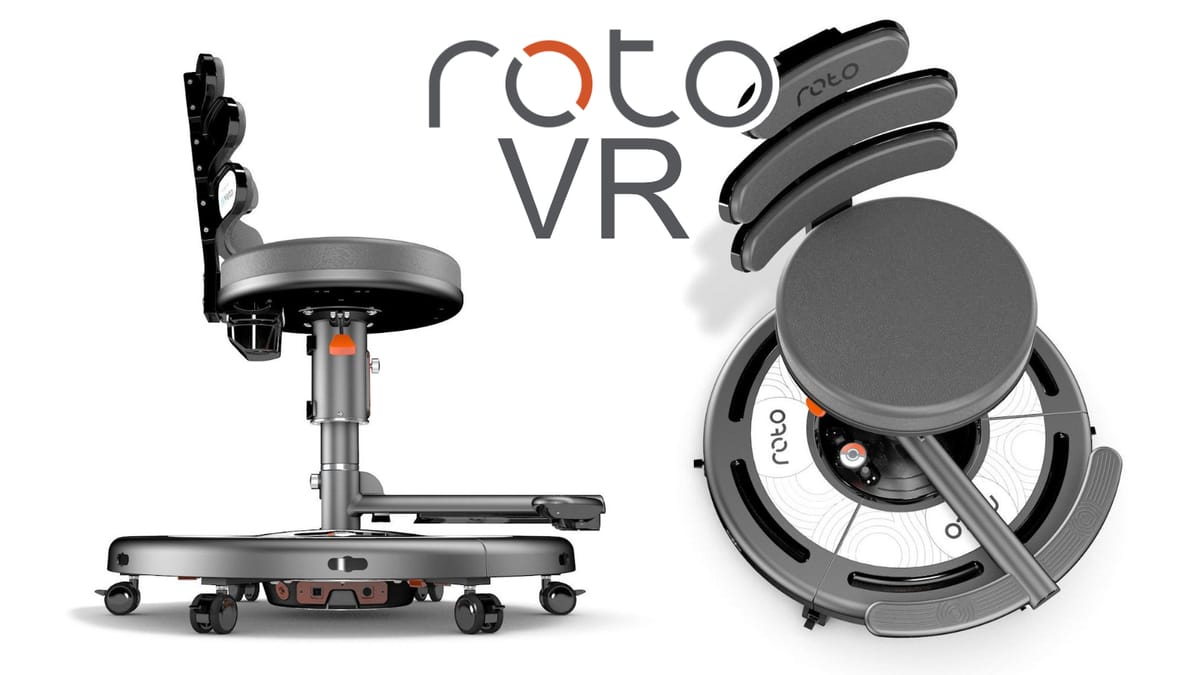
I love virtual reality. I have over a dozen headsets ranging from early prototypes to the most recent models (minus Apple’s headset – seriously, stop with whatever that’s supposed to be) and I’m always excited to see what’s new in the virtual world. I’ve invested in a great many accessories for my virtual and augmented reality headsets, always looking to push the immersion to the next level. There’s one unfortunate constant, though – nausea. As much as I love virtual reality, entirely too often, it doesn’t love me. Many games nowadays do a great job of finding ways to raise the comfort level of the user through various anti-nausea settings like teleport, snap turns, higher refresh rates, but you never know when vestibular imbalance is going to cause nausea and ruin your day.
One of the high-end toys I Kickstarted forever ago was the Yaw3, a virtual reality simulation chair with 3 degrees of freedom. It’s absolutely awesome, offering up an incredibly immersive experience. It also takes up about six feet of space in every direction, and costs FOUR GRAND. When I saw that Roto VR Explorer was trying to build something that could give some of that same experience, but in a more compact and affordable way, I was intrigued to say the least. Could an $800 device even hold a candle to the Yaw3? What about their assertion that it actually combats nausea with natural motion? Well, I’ve gotten my hands on one ahead of their October 1 launch date, and I’m eager to see if it can back up such lofty claims.
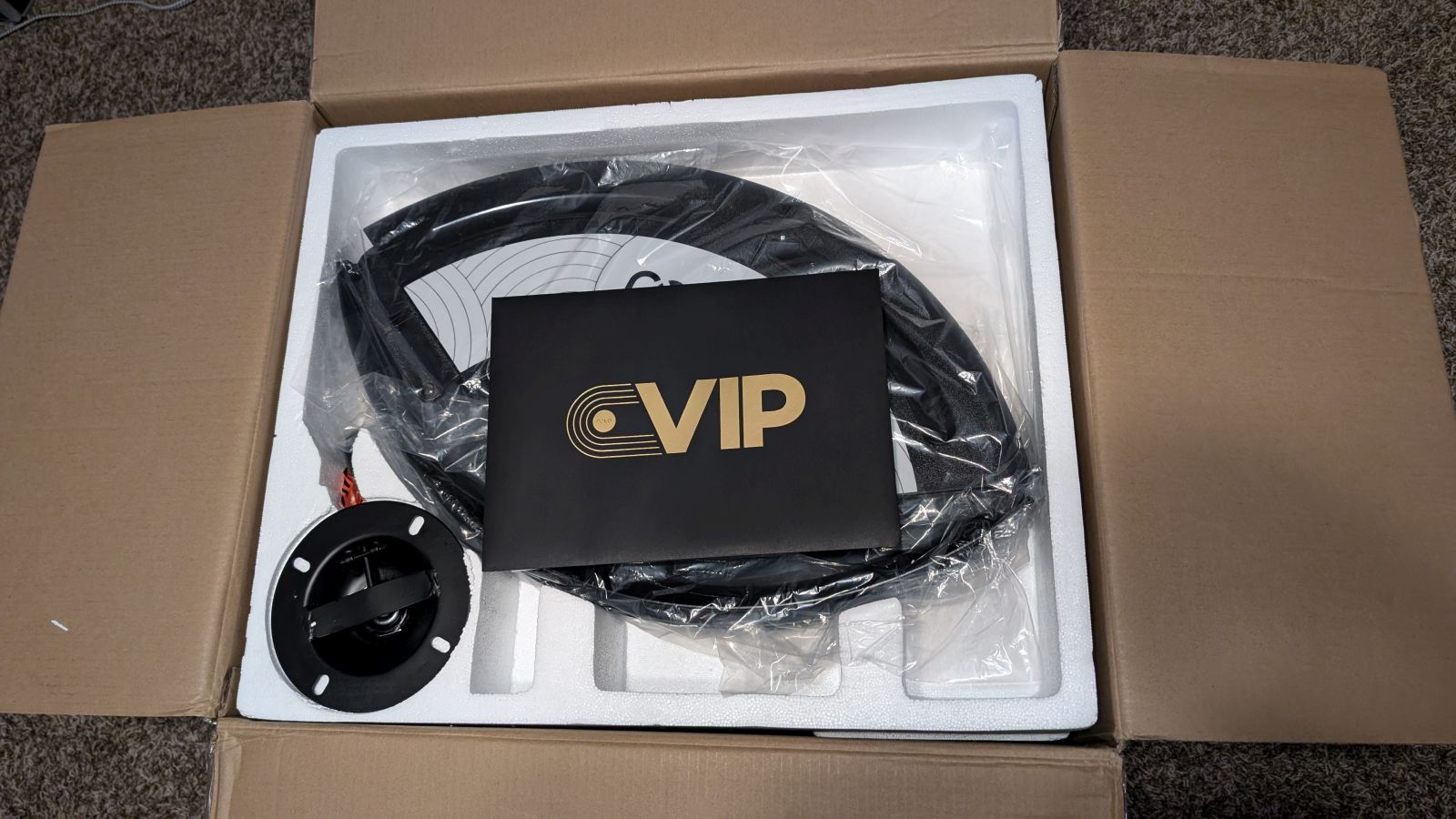
The Roto VR comes in a fairly heavy box about the size of two large PC cases standing vertically, stacked next to one another. Unboxing it, I was immediately surprised to see an almost entirely metal construction. Inside the box is a central self-contained motor design, with splines for the legs. Also in the box is a seat with some back padding, a foot rest, a safety guard system to keep your feet safe, and an adjustment system like you’d find on a standard chair to raise and lower it.
I was happy to see that the assembly information for the Roto VR Explorer is remarkably easy to follow, with clearly defined and illustrated step-by-step instructions. The bags for each bolt was marked A through E, and were called out specifically in the manual. A trio of included hex wrenches was all that was necessary to assemble the entire device.

Flipping the seat over I saw that there are roughly triple the necessary amount of mount holes here – preparation for ambitious future expansion. Also under here, a place to mount a rumble system. When combined with a wireless audio source that you pair via Bluetooth, it’s able to provide a butt-rumbling time, not unlike a theater chair with a Butt-Kicker installed. There are a handful of expansion ports (a USB-B port on the bottom next to the power port, for example) that also speak to future expansion. You can see one of these possibilities in the manual, where a steering wheel, complete with pedals, is shown, mounting onto the front of the foot rest. There are also additional back supports and a head rest, as well as adjustable arm rests pictured here. What I’m trying today is interesting, but it’s very clear that Roto is looking into the future.
Beneath the seat are four holes to mount a fairly sizeable box that is otherwise unremarkable. It’s badged “Roto” but that doesn’t tell you what it does. Don’t worry — once you pair it with an audio device your butt will do that for you. This rumble pack reminds me of the Butt-Shaker addons for theater chairs, offering the same thumps and bumps to go along with the natural motion. When combined with the haptics of the device itself, it raises the immersion to a whole new level. It’s just another way that the Roto VR Explorer does a great job of tricking your brain into believing you’re in a completely different world.
With the device assembled, the only part that made me wince is the ever-present plastic caster wheels. These might be decent on hardwood floors, they are awful on just about anything else, especially carpet. Once I’m certain that the device is stable for use, I’ll likely be swapping them with this type of skate wheel. You can get this type with a lock to ensure nothing moves during play, but also unlocking so the Roto VR Explorer can be wheeled out of the way when not in use. Just know that you’ll need two – the Roto VR Explorer uses six wheels and these packs only come with five.

The last element in the box is a small device that looks not unlike a Poke-ball. This two-tone device will act as the head tracker, translating your head movements to rotations in the chair. If you are immediately thinking “Well, I could just use a swivel chair”, I’ve actually tried that with various chairs like a barstool and a standard gaming chair. The player just sat there, facing forward instead of rotating, completely negating the natural and smooth movement that physically turning the chair would provide. This tracker can sit in a small inductive charger in the base of the chair, or can be charged via a USB-C port in the side. Once charged, this is your key to a game changing adjustment to gameplay.
I did run into an issue with the inductive charger. No matter how I positioned the head tracker, it would charge but also chirp every five minutes like clockwork. Given that it was charging, I’m not sure what it was trying to tell me. The lights also indicated that it was charging, and it was. Support is looking into this, but it could be a simple pre-production issue for my system. It also highlights that the team can, and likely will, be issuing updates periodically that you could load via that USB-C port.
Standing almost three feet tall, but taking up no more width than a standard office or gaming chair, the Roto VR Explorer is an unusual looking device, but not entirely foreign. Sitting in the chair, you place your feet on the anchor-like crossbar that rides above the Roto VR-branded safety cover that keeps your feet separate from the legs of the chair. It feels like a slightly wider bar stool, but with a backrest. Settled, you’ll take the head tracker in hand, with your head facing forward, aligned with your feet. Turning the device on, it’ll flash green for a few seconds, and then be ready for action. Slipping the device onto the crossbar of my VR headset, I then held in the Bluetooth button on the side of the tracker for a few seconds. It beeps twice, letting me know that it’s paired with the base, and ready for action – something IMMEDIATELY apparent the first time you turn your head.

The head tracker and the base module are a matched pair. When you turn your head slightly, the chair turns slightly. Turn your head a lot and the chair turns a lot, and fast as well. You can adjust this via a dial in the base, but I’m a “dive in head first” kind of guy, so I left it all the way up. If this is going to make me sick, I wanted to know immediately. Of note, if I ran into trouble, or if I felt unsafe or uncomfortable, simply slipping the head tracker off my VR headset would cause it to immediately stop the motion on the device. There is a small safety sensor in the clip of the tracker that must be covered for the Roto to move at all. With the chair spinning along with my head movements, I fired up my first game.
Knowing that having something rooted in reality and recognizable can trick your brain to avoid nausea, I fired up the Augmented Reality freebie game “First Encounters VR”. After mapping my room (which I did by turning my head and looking around as the chair spun in whatever direction my head was facing), I was ready to play. Little creatures began emerging from cracks in my real-world reality. At first, they come at you slowly, but by the end of the five minutes of chaos, they are flying at you from all directions. If there was going to be a problem, it was going to happen now. But it didn’t. I stopped paying attention to the movement, and I was just fully immersed in the game. At full speed I whipped from one side of my space to the other, blasting aliens with my guns in each hand. They stacked up, queueing into my spaceship to be…well, I don’t know what happens to them, but it appears they are trapped in a bubble and then liquified. Try not to think about it too much. Maybe the AR nature of the game was enough to keep my brain from setting sail on the U.S.S. Nausea?
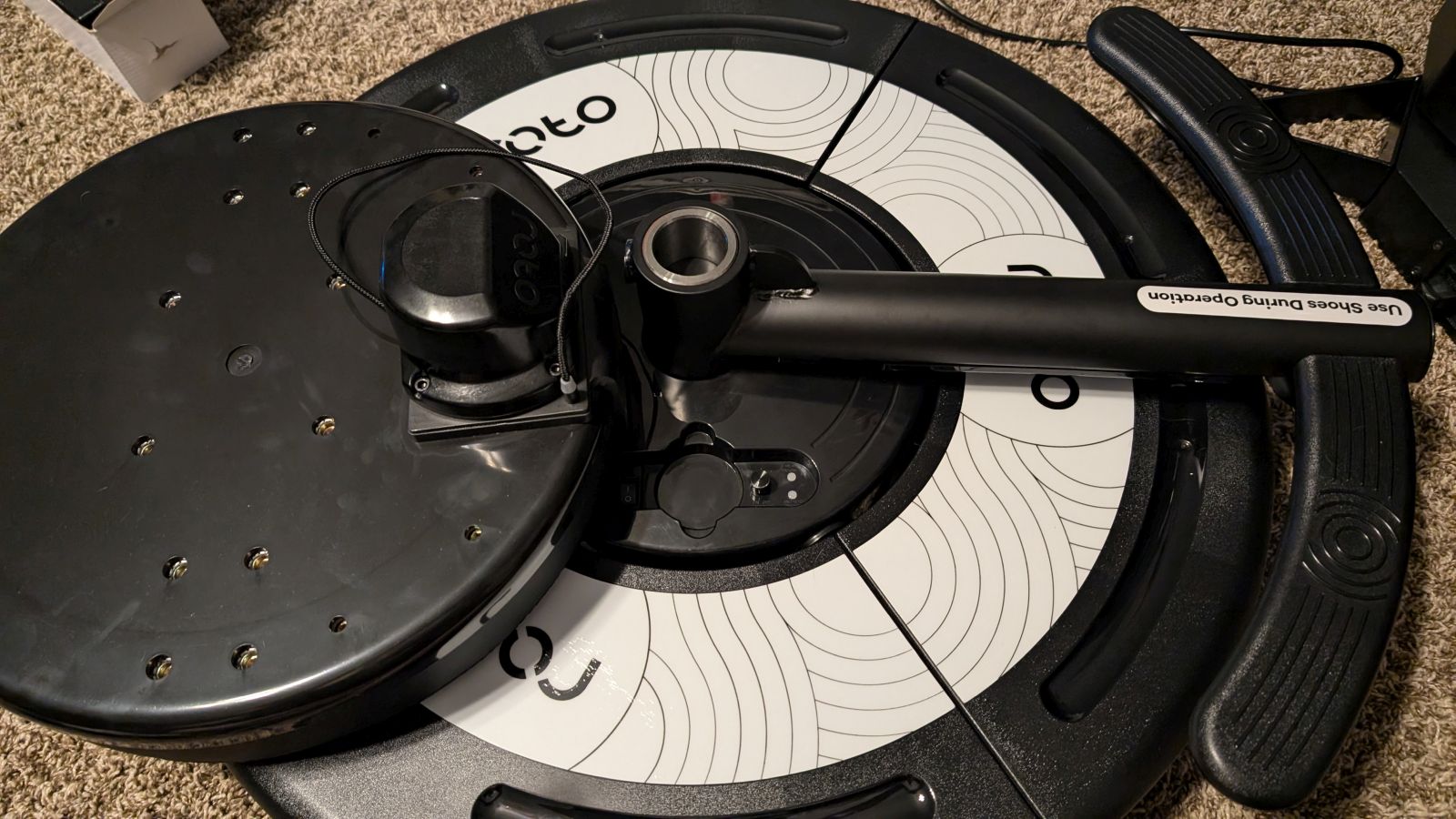
There are two things I know for certain – 1.) Hitman 3 is a great game bursting with incredibly creative ways to dispatch your enemies, and 2.) Hitman III VR may be the most poorly-launched major VR title I’ve seen in recent memory. Framerate issues despite having PS2-era graphics, major pop-in at all times, and more bugs than a White Castle Burger restaurant – a recipe for vestibular chaos if I’ve ever heard of one. Firing it up, the mixture of letterboxed video in the center of my field of view, then popping back to full VR causes the game to slowly drag the assets into view. Walls materialize out of thin air, if they materialize at all. Some walls simply evaporate, though they are still solid when you try to walk through them. Areas outside of windows are obfuscated with a strange dot matrix starfield until they load and fill in. The entire scene jitters as it’s an eye-wateringly low 36fps reprojected to 72fps. In short, it’s a new low for the franchise, and frankly I’m second-hand embarrassed for developer XR Games. Or I would be, if it wasn’t so damned fun.
I’m not reviewing Hitman 3 VR, and let’s be honest, I wouldn’t be kind if I was, but there’s no denying that it’s a lot of fun to physically fiber wire your targets and take their clothes. Physically punching somebody or braining them with a wrench is equally as satisfying. When it’s working correctly, and that’s far less than I’d like, it works remarkably well. I can describe it, but let’s see it in action.
As you can see, looking around has the chair tuning quite a bit. My head is on a swivel, and I’m watching for anyone that might discover my insidious plan. Once again, between the awful framerate, the HUGE swings in movement, low resolution, and movement in one direction while looking in another SHOULD have had me sick as a dog. Despite hours of covert action (and more than a few at Silent Assassin rating, thank you very much!) I was actually feeling better than I would if I had just played while seated. More than just enabling smooth rotation, this is more like the natural motion of turning your head. If, like me, you find “smooth turning” with the stick to be the least truthful thing in VR, instead often being a stuttering mess, then we’re on the same page. On the Roto VR Explorer it’s more like using natural forward and back motion on the stick, while using your head to turn in the direction you need to go. Something about the way my brain was processing the combination of fake motion and real motion resulted in an outcome better than the last five years of standing or sitting? No way I could have predicted that.
Iron Man VR is one of my favorite games on the PlayStation VR2. It’s a little slower and uglier on the Quest 3, but that’s made up for by not having a cable hanging around – it’s a tradeoff. It’s also very fast-paced as you whip around the environment at high speeds using your repulsors.
Naturally I had to try games like Riven VR on the Roto VR. You spend a great deal of time walking around the various spaces, engaging in puzzle and mystery solving. The gameplay isn’t nearly as fast paced as something like Iron Man VR, so the motion was far more gradual and gentle.
The last game I tried is another personal favorite and exclusive to the platform – Asgard’s Wrath II. I absolutely loved it, as did David when he reviewed it. It has not only frenetic combat, but also fast reaction times where you’ll be running off of a wall, leaping through the air, and stabbing a dog-faced foe. It’s a must-have for anyone who owns a Meta Quest 3. It put the Roto VR through a WORKOUT, whipping around and making me feel like an absolute badass. Moments like this are why I play VR, and the Roto VR Explorer was adding a whole new dimension to it.
Let’s be clear, all of the games I’ve tried so far translate head motion to chair movement, but that’s not the endgame for Roto. They have offered developers a free SDK to allow them to create full VR experiences without just translating head movement to rotation. Instead, this SDK would allow them to inject specific movements at predefined times, such as flying a ship through an asteroid field, spinning out a car that just hit an oil slick, or simply turning a player to a predefined space to ensure they see some important story element. With VR, the player is able to look anywhere at any time, but combined with the Roto VR, you can at least grab their attention for a moment.
New integrations with the SDK aren’t the only areas where the Roto team are prepping for expansion. A small USB-C port on the chair lets you charge while you play. A small gold-plated slip ring can pass power and data through the chair without tangling the cables, enabling things like cameras, racing wheels, and joysticks to be supported without tangling up cables. A “PC Advanced Cable Magazine” that supports USB-C 3.1 will release to go with it, enabling all of that data passthru and power. Once that’s released, the expansion possibilities are endless.
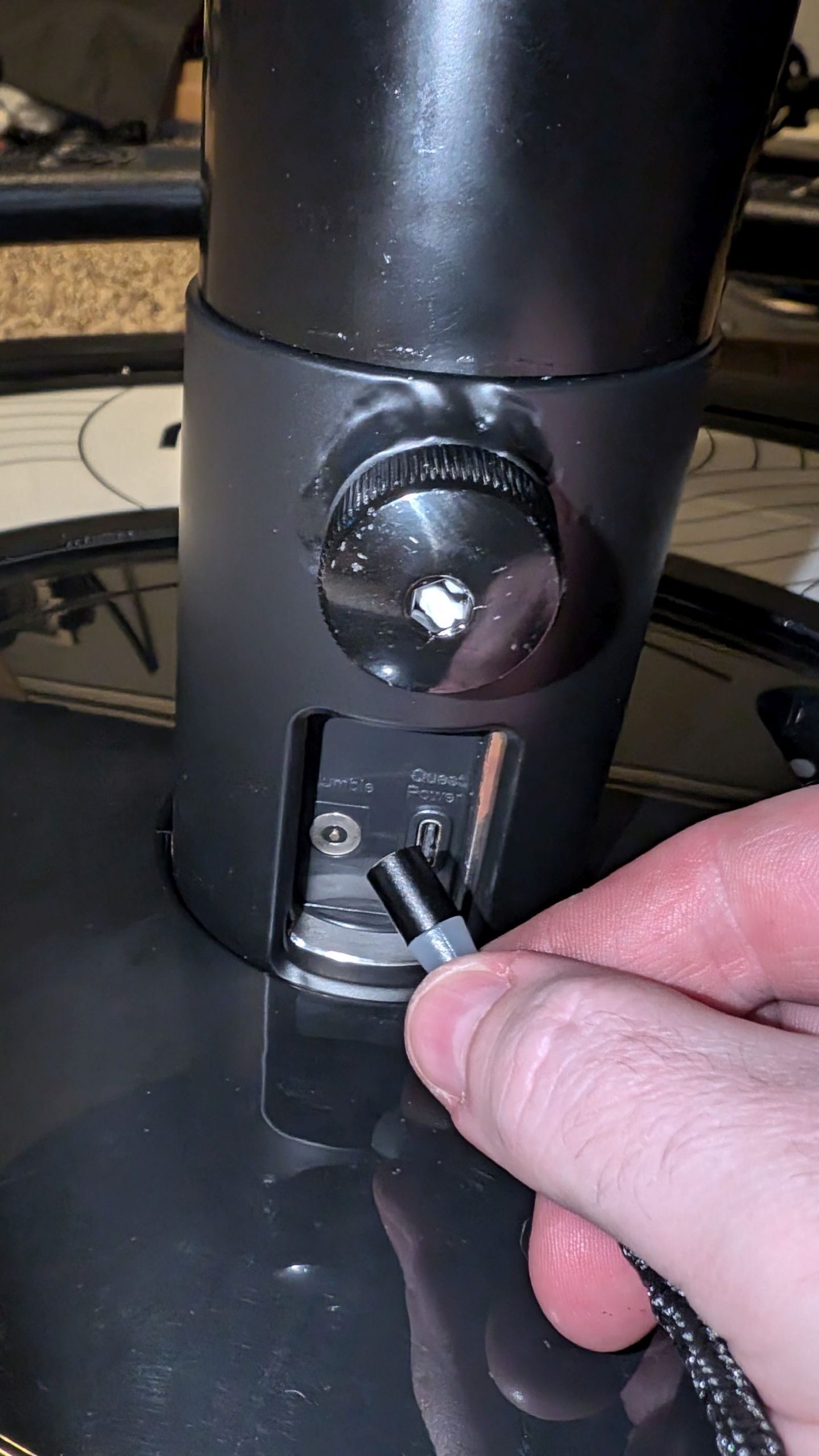
The Roto VR team has partnered with Meta to ensure that they support the hundreds of games that has been released for that platform, but that doesn’t preclude them from supporting other HMDs. In fact, they directly address this in their FAQ, advising that Roto VR Explorer supports all other all-in-one headsets such as the Vive XR Elite, Pico Neo 3, and will soon support the Apple Vision pro. PCVR support is also coming with the aforementioned PC Advanced Cable Magazine, though we won’t know what that’ll look like going forward. They do explicitly mention that they won’t be supporting the PSVR 1&2, Varjo, Pimax (PC version – I bet they eventually support the Crystal), Oculus-S, and Reverb G2, as well as the HTC Vive and Valve Index. Bummer if you’re using those.
I have one complaint with the Roto VR Explorer – the seat. After an hour or so, I’m looking for an additional cushion to put under my butt. You can’t swap it out with a different seat for a variety of reasons, but at least for my butt, it’s just not as comfortable as I wish it was. I play drums and something akin to a Pork Pie would have done the trick, but for my cheeks, I’m bringing a second cushion.
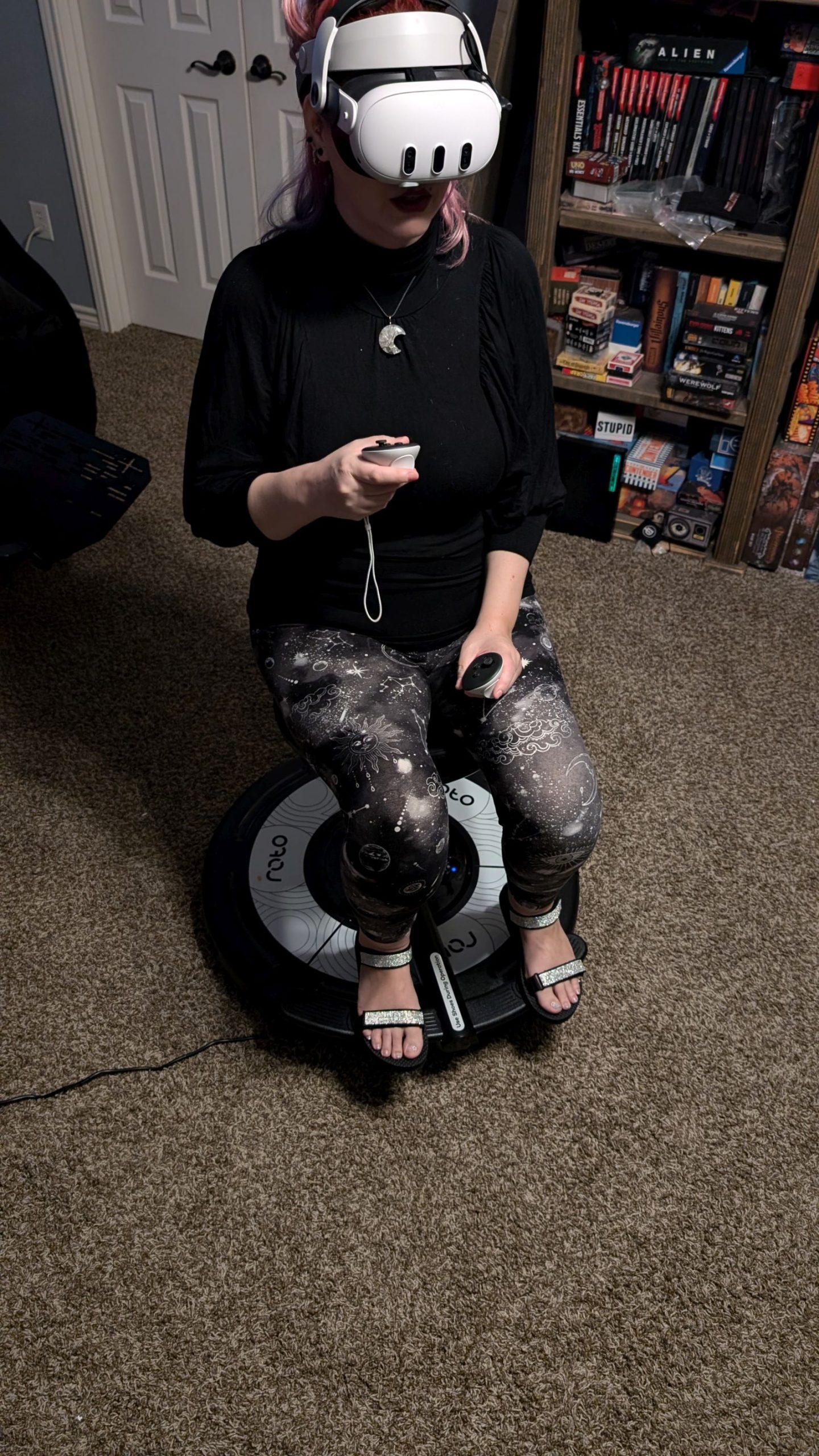
As always when we look at hardware, we hit up two last items – warranty and price. The warranty on the Roto VR Explorer is a year, and the price is $799. That does make it a bit of a premium item for VR, to be sure. That said, as someone who suffers from nausea can attest, they are very frustrated to not be able to experience the same things everyone else is, and that price makes it far more tolerable. There’s nothing worse than nausea as it ruins your whole day. I’m sure there’s a great deal of science behind how this works that I can’t begin to explain more than I’ve done here, but I’m glad that it does as it makes it worth every penny.
After putting in more than a few hours with the Roto VR Explorer, I’m excited to see where they take it. New accessories are expected to launch this year, with new ones arriving in 2025, further expanding the utility of the device. As developers embrace the SDK, we’ll also see new functionality in games like Flight Simulator and racing titles like Dirt 5. There’s a space for something in the middle of the obscenely-priced but-extremely cool Yaw3 chair at $4000 (plus accessories!) and a normal gaming chair with no movement whatsoever. The Roto VR Explorer fills that nicely, and with so many ambitious plans on the horizon, it’s exciting to see what’s next. I just know that, for this nausea sufferer, there’s something magical about this device, and I’m very much here for it.
You can pick up the Roto VR Explorer at their official website on October 1, 2024.
